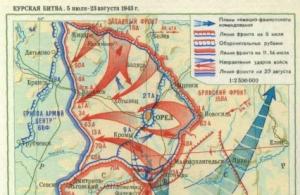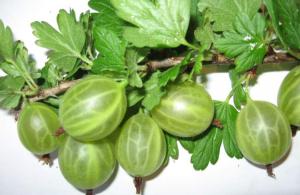Foundation blocks are products made of concrete of medium and high strength. They are used for the construction of strip and column foundations. The versatility of the design allows the use of concrete blocks for the foundation when constructing the walls of the basement, basement and technical room or garage.
The construction of the foundation is a critical stage on which the stability and strength of the entire building depends. Therefore, the load on the base is always the greatest. The quality of the material frost resistance, immunity to environmental influences plays a huge role. Concrete foundation blocks are ideal in all respects.
Wide application is explained by excellent technical characteristics:
- high degree of resistance to mechanical loads;
- independence from climatic conditions and any environmental influences.
For the production of blocks, concrete of class M-150, M-100, M-200 is used. The class of concrete, manufacturing technology and the presence of a reinforcing frame affect resistance to mechanical loads and negative environmental influences.
In order to choose the best option, it is necessary to take into account climatic conditions, shrinkage, humidity and soil density
Types and sizes
Two types of blocks are used to build the foundation:
- hollow (FBP);
- solid (FBS).
Monolithic with a cutout (FBV) is another type of block, but it is practically not used for foundation construction.
FBPs are used to construct foundations for light wooden buildings, but their strength is very low I. They are not in great demand. In dacha construction, FBS is most often used, which are made from reinforced concrete only in factory conditions. They are more durable and suitable for building foundations for massive buildings.
Depending on the type of concrete from which the blocks are cast, they can be:
- made of lightweight concrete;
- made of heavy concrete;
- from expanded clay concrete.
 Concrete blocks vary in size and weight, which affects the price of the material. For multi-story buildings, large blocks are more often used; for low-rise buildings, it is more effective to use smaller-sized materials.
Concrete blocks vary in size and weight, which affects the price of the material. For multi-story buildings, large blocks are more often used; for low-rise buildings, it is more effective to use smaller-sized materials.
In order to select fundamental solid blocks, you must carefully study marking, where the numbers after the abbreviation indicate the main parameters:
| Name of product | Length |
Width | Height | Concrete volume |
| FBS 12-4-3 | 1180 mm. | 400 mm. | 280 mm. | 0.13 m3. |
| FBS 12-5-3 | 1180 mm. | 500 mm. | 280 mm. | 0.16 m3. |
| FBS 12-6-3 | 1180 mm. | 600 mm. | 280 mm. | 0.19 m3. |
| FBS 12-7-3 | 1180 mm. | 700 mm. | 280 mm. | 0.24 m3. |
| FBS 12-8-3 | 1180 mm. | 800 mm. | 280 mm. | 0.26 m3. |
| FBS 24-3-3 | 2380 mm. | 300 mm. | 280 mm. | 0.19 m3. |
In country house construction for building a foundation Concrete blocks measuring 20x20x40 cm are most often used, which can be purchased in specialized stores, from suppliers or on the market at an affordable price. They are used to create strip and columnar foundations for low buildings with basements.
A separate variety is wall concrete blocks. They have additional cutouts for ease of installation
The use of foundation blocks makes it possible to reduce the volume of concrete work and, accordingly, reduce the financial costs of construction.
How to make a foundation from reinforced concrete blocks
For low-rise and multi-story country houses, strip foundations are quite suitable.
They come in two types:
- monolithic;
- prefabricated
The specificity of a strip monolithic foundation is that it is performed directly on the territory of the construction site. Even a novice builder can do this.
A prefabricated strip foundation consists of concrete blocks or slabs manufactured at a factory and installed using specialized equipment. It is used in the construction of multi-level buildings, and is also widely used in individual construction for the construction of a summer house or any other building. Building a prefabricated foundation is not difficult, The main thing is to maintain consistency and take into account the characteristic features.
Preparatory stage
 The first thing is to thoroughly prepare the area, clearing away unnecessary debris and excess vegetation. Having prepared the area, you can begin marking, using pegs and twine for these purposes. The next step is to make a ditch using these guidelines.
The first thing is to thoroughly prepare the area, clearing away unnecessary debris and excess vegetation. Having prepared the area, you can begin marking, using pegs and twine for these purposes. The next step is to make a ditch using these guidelines.
- It is worth knowing the level of soil freezing in advance. After all, the depth of the trench depends on this. It is calculated by the formula soil freezing depth plus 15 cm;
- it is necessary to equip access on different sides with a length of 3 m to organize free space for work;
- if there is groundwater, you need to additionally consider how to make drainage and strengthen the soil with crushed stone or sand;
- think through the ventilation system on load-bearing walls and partitions in advance;
- a hole can be made with a shovel if it is small or with the help of machinery if it is large. But after finishing the work, the bottom of the trench must be leveled using a regular shovel.
After completing all the work, you can proceed to preparing the foundation.
Preparing the base
The preparatory stage involves removing the fertile soil layer
To prepare the foundation, perform the following operations:
- the bottom of the pit is covered with sand (10-20 cm), spilled with water, leveled and compacted;
- Polyethylene or roofing felt is placed on the resulting cushion. You can make a cement screed 5-7 cm thick or lay FL blocks.
- level out
- Reinforcing mesh is placed on the top of the pillow. It is necessary to ensure that its edge and the edge of the block are at least 3 cm apart from each other;
- tie the reinforcement with wire and fill the mesh with solution.
After completing the preparatory work, concrete blocks are placed in the pit.
To do this yourself, follow the following technological sequence:
- FBS of the first level is laid starting from the corner;
- the joint is filled with concrete mortar, both vertical and horizontal;
- The subsequent levels are laid according to the principle of brick bonding. This means that the upper blocks should rest on the lower ones so as to overlap the vertical seams with the center.
Bandaging blocks
 After completing the entire process of laying FBS, quality control is carried out using a level. The last stage is the installation of formwork and grillage (reinforcing belt). When the mixture hardens, the formwork must be removed and all unnecessary parts removed.
After completing the entire process of laying FBS, quality control is carried out using a level. The last stage is the installation of formwork and grillage (reinforcing belt). When the mixture hardens, the formwork must be removed and all unnecessary parts removed.
This can be done as follows:
- the outside surface of the foundation is covered with bitumen;
- perform thermal insulation using polystyrene, which is secured with glue or disc nails;
- backfilling is done, the purpose of which is to eliminate gaps in the base;
- sand is poured into the gap between the blocks and the side of the pit, water is poured in and compacted.
I usually lay reinforced concrete floors on top of the precast foundation.
How to make an intermittent (prefabricated monolithic) foundation
Since building a base from blocks is quite an expensive undertaking, it is sometimes more profitable, especially when constructing small buildings, to lay it not in a continuous manner, but over short distances.
This type of foundation is called intermittent and allows you to reduce the amount of required material by almost 25%, which means that the cost of the project will also decrease
When constructing a prefabricated monolithic foundation, the cushion slab is laid out on the base with a distance of 25-50 cm. Afterwards, foundation blocks are mounted, resting on the cushion slabs or blocks of the lower rows. The voids that are formed in this case are closed with formwork panels on all sides and concreted with a solution of class B 12.5 or higher.
To strengthen it, a monolithic grillage is mounted on the upper part of this structure.
Another secret to making intermittent foundations more effective is to try installing a solid monolithic belt along the bottom of the pit. This is recommended if construction work is carried out on an area where local subsidence may occur.
Price
The price of concrete blocks depends on their size and variety. Most often, concrete blocks measuring 20x20x40 cm are used to build the foundation, which can be purchased in specialized stores.
The cost can vary from 500 rubles per piece depending on the region. If blocks measuring 400 x 200 x 200 mm are not available, craftsmen advise doing the following: purchase substandard ones, the price of which is much lower, or buy used concrete blocks.

Of course, the cost of the latter will be significantly less, but no seller can guarantee the quality of the product. Therefore, it is better to think in advance what is more profitable to purchase.
The approximate price of new and used concrete blocks is shown in the table:
| Name | Price, rub) |
| FBS 9-3-6 | 689 |
| FBS 9-6-6 | 1463 |
| FBS 12-3-6 | 917 |
| FBS 12-4-3 | 554 |
| FBS 12-4-6 | 1179 |
| FBS 12-5-3 | 768 |
| FBS 12-5-6 | 1484 |
| FBS 12-6-6 | 1790 |
| FBS 24-3-6 | 1693 |
| FBS 24-4-6 | 2230 |
| FBS 24-5-6 | 2808 |
| FBS 24-6-6 | 3387 |
| FBS 24-3-6 used | 1100 |
| FBS 24-4-6 used | 1200 |
| FBS 24-6-6 used | 1600 |
The installation of foundation concrete blocks can be understood from the video:
Prefabricated block foundations appeared many decades ago. To this day, many buildings stand on strip foundations assembled from concrete blocks. But not all builders consider them reliable: after all, they are not monolithic, and therefore are less resistant to soil movements.
Monolithic foundations have a very high degree of reliability. But their creation is a very long and difficult process; it requires installing formwork, making a reinforcing belt for several hundred tie points, mixing a large amount of mortar, and pouring it. Then wait a few weeks for the solution to mature and only then continue construction work. Everything takes at least a month, and often more - if everything is done with your own hands, without involving outside workers.
To speed up the process, ready-made foundation blocks are used. They are produced by many factories; they come in different types, geometries and dimensions. Some can only be worked with using construction equipment, while others - the smallest ones - can be worked with manually.
During assembly, they are installed in a dug pit on a prepared cushion. Rows and elements in a row are connected using cement mortar, sometimes using reinforcing belts to increase reliability. You can even assemble a small base for a bathhouse, a small house or a garage in one day. After that, all that remains is to carry out waterproofing and insulation work.
But due to the fact that the structure is not a monolith, it can only be installed on reliable, non-heaving soils. If there is even a minimal tendency to heave, it is better not to install a prefabricated block foundation: if significant forces are applied to it, it will begin to “walk” and the building may collapse. However, on dry and rocky soils this is one of the most affordable and quickly erected foundations. Now you know where you can install prefabricated block foundations.
What are the types of foundation blocks?
First of all, let's talk about the materials from which the foundation blocks are made. This:
- reinforced concrete;
- expanded clay concrete;
- silicate concrete of increased strength.
In the manufacture of reinforced concrete blocks, the mortar is most often used in the grades M-150, M-100, M-200. Depending on this, the characteristics change and the price increases. If the building is supposed to be massive, large and heavy, blocks of the highest quality, with high strength, are needed; for low-rise construction and the foundation for a bathhouse, blocks from M-100 mortar are sufficient.

Reinforced concrete blocks are and are called heavy: their mass is large due to the high density of the solution. Their weight, depending on the dimensions, can be from 300 kg to 2 tons. To distinguish the type of block, the letter “T” is placed at the end when marking.
When making expanded clay concrete, expanded clay is used as a filler. This composition is lighter, the mass of the blocks is from 260 kg to 1.5 tons. When marking these products, add the letter “L” at the end - light. They have better thermal insulation characteristics and a lower price.
But unpleasant properties and features also appear: high hygroscopicity, as well as lower strength. To neutralize hygroscopicity, careful waterproofing and measures to drain water from the foundation will be required. But nothing can be done about strength: expanded clay concrete blocks can only be used on foundations for light buildings, for example, wooden bathhouses or single garages.

In the manufacture of silicate concrete blocks, lime is used as the main binding element. The solution is of medium weight, which is why these blocks are called light and are designated at the end with the letter “C”. The weight of products manufactured according to standards (minimum density 1800 kg/m3) can be from 300 kg (the smallest) to 1.63 tons (the largest).
According to GOST, silicate concrete blocks are not used in conditions of high humidity. This means that they are not suitable for foundations.
Characteristics
In addition to material, density, weight and price, there are many characteristics that need to be paid attention to. There are many more parameters by which you will have to choose them.
Types and sizes
Foundation blocks have different shapes and profiles, and also have different overall dimensions. Products of different shapes have different purposes and markings:

After the letters that indicate the type of product, there is a set of numbers. They display the dimensions of the blocks, indicated in decimeters. The first number is the length, the second is the width, and the last is the height. For example, FBS-24-6-6 is a rectangular block, 240 cm long, 60 cm high and 60 cm wide. The designation FL-6-12-3 stands for: trapezoidal block (pillow), 60 cm long, 120 cm wide and height 30 cm.

The use of all these blocks involves the use of cranes or, at a minimum, a winch. But there are very small blocks, measuring 20*20*40 cm. They are poured into standard molds at the same factories. When pouring, vibratory compaction machines operate, which increase the density of the solution. A mixture of Portland cement, sand and larger aggregate is used. The filler can be gravel, and then the block is concrete, or expanded clay, and then it is, respectively, expanded clay concrete.
Small-sized concrete blocks are solid and hollow. Solid ones are used for laying the foundations of light buildings on reliable soils, hollow ones are used for erecting walls. You can work with them without equipment: the weight does not exceed 40 kg. But when constructing such a foundation, it is necessary to create additional reinforcing belts. In some cases, a metal mesh is placed in each horizontal seam. And to increase strength, you can also make a reinforcing belt of greater height. It all depends on the conditions on the site and the design of the building.
Frost resistance
This characteristic is important for most of the territories of our country. Any of the materials can withstand a certain number of freezing and defrosting cycles. To increase this indicator, various additives are added to the solution. It is clear that the more cycles a concrete block endures without destruction, the longer the foundation will last.
 FBS block size table
FBS block size table Resistant to media
If there are acidic or alkaline soils on the site, it is necessary to choose the type of concrete accordingly. If we talk about the Moscow region, then most of the soils are acidic, so here it is necessary to use blocks with crushed stone as a filler: it makes the products resistant to acid attacks.
The acidity of the soil is determined using tests that can be purchased at a store that sells agricultural equipment. They cost pennies, the method of application is written on the packaging, as well as the scale by which the condition of the soil is determined.
Cost and quality
You can tell exactly how much a particular foundation block costs only after calling several factories in your region. Prices vary significantly. Moreover, there can be a significant difference even among manufacturers in the same region. It could be the brand of concrete. Here you need to ask and compare. Take the time to visit each production site and inspect and evaluate the blocks presented there according to the following parameters:

- Geometry. All blocks must be identical, the edges smooth and clear. It is also desirable that the surfaces also have a minimum of flaws or no flaws at all.
- The declared density can be compared at home (we are talking about small blocks of 20*20*40 cm). They need to be weighed, dimensions and weight compared. Calculate density. For expanded clay concrete it should not be lower than 1800 kg/m 3, for concrete - not lower than 2000 kg/m 3. Only these can be used for foundations.
- Then do a crash test: throw blocks from the same height onto a hard surface. Under no circumstances should they crumble and chipping should be minimal.
These simple manipulations allow you to determine the quality of concrete blocks. Just don’t forget which of them belongs to which company (sign or number).

Construction of a foundation made of blocks
There are several types of foundations that can be constructed with concrete blocks. These are strip, pile and columnar. The technologies are not much different, but there are still some features.
from blocks
There can be several options for constructing a strip foundation made of blocks:

Is it possible to make such foundations from 20*20*40 cm blocks? If this is a small structure in weight and the soil is suitable, then the answer is “yes”. In this case, a log house made of logs or timber will feel especially good. Due to the elasticity of the wood, possible movements will be compensated. In addition, this material is lightweight, and the strength of small-sized blocks will be enough to support this weight.
If the soils have even the slightest hint of heaving, or the house is heavy, only specialists can say whether it is possible to make a foundation from small blocks after examining the site and making calculations.
Using blocks for pile and columnar foundations
Reinforced concrete products of different sections are used: round, square, polygonal. They go deep to strong layers of soil that can support the weight of the house. The upper part of the piles is united by a strip base on which the walls will rest. This type of foundation is good on complex loose or highly heaving soils.

Columnar foundations have a similar geometry. Only their depth is much less. There are shallow (above the freezing level) types and those with a foundation below the freezing level. The smaller depth is compensated by a larger base area: the pillars are usually wider. Here, as with the construction of a prefabricated strip foundation, the following options are possible:

Results
Proper use of concrete blocks for foundation construction greatly speeds up the process. Whether it will turn out cheaper or more expensive is difficult to say. In some cases it is cheaper, sometimes, due to the need for long-term rental of a crane, it is more expensive. What is undeniable is that it is built much faster, and this is sometimes no less important than the cost.
The size of the concrete block depends on the scope of its application. The products are used for the construction of supporting structures, walls, ceilings, and staircases. Such artificial building materials are available in any color, and the shapes from them are used to build small and medium-sized houses in a very short time. If according to the plan a house is built from wood, then concrete blocks will be used to build the basement. Also, such reliable building material is used for the construction of houses, hangars, saunas, garages, non-residential buildings and fences. Due to its reasonable price, the product is popular and has improved sound-proofing and heat-insulating qualities.
Types of blocks
Concrete blocks have differences in shapes, parameters and fillers. Products are made from light or heavy type concrete solutions.
Heavy
The building material belongs to the heavy variety when its dry mixture density is up to 2500 kg/m3. The main types of concrete blocks are made from heavy concrete, the main ones being sand-cement mortar and cinder block.
Sand-concrete
This type refers to hollow products that are reinforced with iron rods. The material is highly durable and is used for the construction of one-story buildings. For the construction of residential buildings, it is better to take the M 100 brand of concrete products. The blocks are available in two types:
- solid products are used for the construction of monolithic foundations;
- hollow elements are used to build walls.

Cinder concrete
The building material has low thermal insulation characteristics; for this reason, buildings made from them require additional insulation. Walls of load-bearing and internal types are built from cinder blocks.
Reinforced concrete blocks
This type of model, made of concrete mortar, has a rectangular shape, equipped with grooves that are designed for laying the mixture in the joint areas. The element has reinforcement built into it, which increases resistance to compression and expansion due to temperature changes. The building material is intended for building a foundation on different types of soil.
Lungs
Building materials with a density that reaches less than 1800 kg/cm3 are classified as lightweight concrete. The weight of the products is reduced due to the lightweight component included in the composition or the foaming of the binder solution artificially. The type of lightweight products includes expanded clay concrete, foam concrete and aerated concrete blocks.
Expanded clay concrete
This material is environmentally friendly; it is made with the addition of expanded clay, water and cement. The main features of expanded clay concrete are good sound insulation, the structure of the products is capable of allowing air to pass through. And at the same time, the building blocks have high thermal insulation qualities.
Aerated concrete
Blocks are a type of porous material; during their production, lime, quartz sand and a gas-forming agent for the cement composition - aluminum powder - are added to the mixture. Aerated blocks have a cellular structure on the surface and inside.
Foam concrete
The composition of the foam block includes sand, cement, water and a foaming agent. This building material is suitable for external and internal walls.
Concrete blocks, their weight and size
The dimensions of concrete blocks are selected for the required scope of application and for this reason they vary. Dimensions of common building materials used for the construction of external walls:
- length – 40x60x90-330 cm;
- height – 30x60x80-390 cm;
- thickness – 20-60 cm.

Main dimensions of blocks for interior partitions:
- length – 40, 90-330 cm;
- height – 30-60, 110, 210, 250, 280, 300, 330 cm;
- thickness – 16, 20, 25, 30 cm.
Question? What is the standard concrete block size? A block with parameters 39x19x19 cm is considered standard.
The weight of concrete blocks depends on the following factors:
- concrete class;
- mixture density;
- number of loops for installation;
- steel grade;
- the amount of raw materials used - concrete and steel.
Wall products made from lightweight concrete exist without voids, weighing up to 20 kg, and with voids, which weigh up to 16 kg.

The foundation block is made from heavy concrete, which is divided into three groups:
- Solid, the weight of one element ranges from 300 to 2000 kg.
- Hollow blocks weigh from 20 to 200 kg.
- Solid ones with voids weigh from 500 to 700 kg.
For walls
This line of concrete building materials has many product options:
- Slag concrete is the most budget option, which has high performance qualities and heat retention properties. Such products are used for the construction of non-residential premises. For example, to build a garage or concrete outbuilding with your own hands, concrete blocks measuring 40x20x20 cm are suitable.
- Expanded clay concrete is in no way inferior to cinder blocks in quality. But its strength is higher thanks to the expanded clay granules added to its composition. This building material has high thermal insulation properties. Therefore, it is recommended to build the entire building from expanded clay concrete blocks. To give the building a complete appearance, the walls need to be plastered.

- Gas silicate panels will also serve as excellent thermal insulation. Various size options allow you to select the most suitable options for the construction of load-bearing walls and partitions.
- Foam concrete blocks are perfect for building interior partitions. Concrete blocks for partitions have the following dimensions: 10x30x60 cm, 20x30x50 cm, 30x40x60 cm, 40x20x40 cm.
For the foundation
The block intended for the foundation has the following strength grades: M100, M150, M200. From such material, which is intended for any climatic zones, strip and column foundations are built. These blocks are suitable for building walls, basements, basements, and industrial buildings. The modules have a rectangular shape and on the upper side there are one or two metal loops for transportation and movement to the installation site.
It is allowed to combine a monolithic base with foundation blocks. In this option, the pillow is filled with the usual mixture, and factory panels are installed on top of it.

The block foundation has the following features:
- speed of installation;
- almost no manual labor is required;
- the amount of work with the cement mixture is minimal, no formwork is required;
- it is permissible to lay the foundation in unfavorable weather;
- the elements are universal - they are suitable for building houses of any type;
- if the work is carried out on a sandy base, there is no need to install a cushion;
- the material is resistant to groundwater and sudden temperature changes;
- frost resistance down to -55 degrees C, the panels can withstand 50 stages of freezing/defrosting;
- the products are of uniform quality;
- the product complies with all GOST standards;
- when the installation is completed, the walls are built, and there is no need to wait for the solution to dry and acquire density;
- service life up to 100 years.
Disadvantages of concrete foundation panels:
- use of expensive equipment during installation work;
- blocks are not suitable for heaving soils;
- Reliable waterproofing is required;
- The block type of foundation ends up being much more expensive than a cast foundation. The price is affected by the cost of work and energy costs.
It is strictly not recommended to lay foundation blocks at insufficient trench depth. The trench must be dug with a width that is equal to the width of the blocks, plus 20 cm - in order to carry out free installation. The depth must be made equal to the height of the two slabs, this is approximately 1 m 20 cm. The level of soil freezing should also be taken into account.
Types of foundation blocks
Types of panels are distinguished by shape, presence of reinforcing elements, and classification of concrete. Quality characteristics depend on the production method, brand and strength. The main features are indicated by markings:
- FBS is a solid unreinforced panel intended for load-bearing structures, the foundations of multi-story buildings, and the construction of basement walls. The concrete block has a length from 88 cm to 118 cm, the width of the concrete block is 58 cm, and the height is from 30-40 cm.

Concrete has long been used for the production of a wide variety of products and structures, and if previously reinforced concrete products were mainly made from this material and foundation and monolithic systems were poured, in our time it is used much more widely. In private buildings, concrete blocks 20x20x40 are very popular - it is very convenient to work with them yourself, and in industrial construction FBS blocks are in great demand.
Features of concrete blocks
To understand why products in this group are so popular, it is necessary to consider their main advantages:
- A wide range of product sizes, allowing you to choose the optimal configuration for any foundation width. Of course, the most popular option is concrete blocks 20 by 20 by 40, but sometimes they simply do not fit, so other configurations have to be used.
- High, obtained after construction. Solid products can withstand even significant loads, and hollow options allow you to create strong and durable walls. If you need special reliability, then options with groove fastening are suitable; they are fixed especially securely, and the walls after completion of the work are much stronger.

The photo shows a tongue-and-groove connection system, which allows you to create strong longitudinal and corner connections to ensure maximum strength
- Selection of manufacturing options: you can purchase both solid concrete blocks and hollow products, which are lighter in weight, making them much more convenient to work with. In addition, you can purchase options with filler, most often it is either slag or expanded clay. And finally, the most common option is, characterized by low weight and high thermal insulation characteristics.
- Possibility of self-production. The instructions for carrying out the work are very simple, and the size of the finished product may vary - it all depends on what form will be used. It is worth remembering that you should not make the dimensions too large, for example, you are unlikely to lift solid concrete blocks 40 by 40 by 40, so it is better to make elements of generally accepted sizes.

- The price of this group of products, regardless of the variety, is quite affordable, which makes them accessible to the widest range of developers. But you shouldn’t chase cheapness when purchasing, since too low a price most often indicates appropriate quality.
Important!
When purchasing, you should ask the seller about the availability of documents certifying the quality of the products.
This is the only way to guarantee that the products are manufactured in a factory in compliance with all necessary technology requirements.
Types of blocks and their features
All products of this type can be divided into two large groups depending on the specific application. Let's take a closer look at each of them.
Elements for foundations
Products in this group must meet several basic requirements:
| Strength | All base elements are subjected to a range of unfavorable loads, so they must meet the highest quality requirements |
| Moisture resistance | A very important factor that directly affects reliability. Since concrete itself is not a material highly resistant to moisture, it must be further processed or water-repellent additives added to the composition. |
| Frost resistance | Since winters in most areas of our country are quite cold, concrete must have high levels of resistance to freezing. |
| Ease of use | A very important condition, because the more convenient it is to work with products, the higher the quality of work. To work with large elements, it is necessary to use lifting equipment |

The following types of foundation blocks can be distinguished:
- A widely used and well-known damper is 20x20x40 concrete blocks, which are most often used due to their ease of use and affordable cost. The products are produced solid, although, as studies have shown, the presence of several small cutouts does not significantly affect the overall strength, but the load on the base is reduced and the thermal insulation properties are improved, which is also an important factor.
- FBS blocks are large in size, so installation can be carried out in the shortest possible time. The disadvantage is the large mass of the products (if you ask how much a concrete block 240 by 40 by 60 weighs, you will be surprised - 1,300 kilograms). Naturally, it is simply impossible to carry out work without lifting equipment.

It is worth noting that the sizes of reinforced concrete blocks vary quite widely - from 90 by 30 by 60, and up to 240 by 60 by 60. But even the smallest option weighs 350 kilograms, so a lift will be needed in any case.
Wall blocks
This group includes a whole range of very different products.
Let's look at the most popular and widespread of them:
- Slag concrete products belong to one of the most budget-friendly sectors, but at the same time they have fairly high performance properties and a solid heat retention coefficient.
- A similar option to the first one is expanded clay concrete blocks; instead of slag, they use more durable expanded clay, which has excellent thermal insulation characteristics. You can build an entire house from such elements, however, it will have to be finished, since the appearance of the building will not be very attractive.

- Gas silicate structures have excellent thermal insulation characteristics. At the same time, the sizes of lightweight concrete blocks can be very different, which allows you to choose the best option for both external walls and partitions.
- Foam concrete products are similar to gas silicate products, but some of their properties are slightly lower than those of the option described above. Concrete blocks 40 by 20 by 40 are perfect for quickly erecting partitions; they cost little, but perform their functions well.
A separate option is concrete block B 1 20 50; these elements are not used for walls; they are used to make drainage structures on highways. This option is practically not used in private development.

Advice!
Gas silicate blocks must be additionally insulated.
You should not believe claims that they are enough for high-quality thermal insulation; in fact, this is far from the case.
Conclusion
The selection of optimal parameters is very important, since the strength of the structure and its performance characteristics depend on it. The video in this article will tell some points in more detail.
For the construction of foundations, block materials made from durable and frost-resistant ingredients are often used. This technology is universal, so blocks are laid under the foundation both during the construction of apartment buildings and during the construction of small buildings.
Columnar structures are also assembled from them. The main thing is to choose the right blocks, which are made from different materials, which is why they have different names. This material is based on concrete. Depending on its brand, the size of the reinforcement and the frequency of its installation, the strength characteristics of the block material depend. Concrete block foundation,
- These are three types of block material:
- FBP - hollow.
- FBS - solid.
FBV - solid, in which cutouts are made for laying communication networks and filling jumpers. The first type is the most common. It is made either from heavy concrete or silicate. Second
They are also made from heavy concrete or expanded clay concrete. The foundation of expanded clay concrete blocks is already insulated. But it has a minus - compared to models made of heavy concrete, their strength characteristics are lower, so it is recommended to use them for light buildings: bathhouse, garage, barn. They are lighter than all the others, cheaper, however, it is necessary to note a good indicator of water resistance. Another plus is the cutouts for filling the jumpers.
The latter increase the resistance to bending and displacement pressure. The third type is, in fact, permanent formwork.
The installation of foundation blocks of this type is accompanied by additional pouring of concrete into the cavity with preliminary placement of a reinforcing frame inside. The frame consists of vertically installed pins, which are tied to horizontally laid reinforcement. The latter passes through all the voids of the foundation blocks.
Concrete stones come in different sizes and are poured from different types of concrete solutions. Depending on their dimensions, they are used either for heavy buildings or for light ones. The photo below shows the relationship between the sizes of concrete blocks for foundations and their weight and volume. This is not the entire classification, because the table does not include materials with small dimensions. For example, FBS 2-2-4, whose weight is 30 kg, which makes it possible to carry out installation without the involvement of heavy equipment.

Concrete blocks are used when you need to quickly lay a reliable and durable foundation.
Foam blocks
 Foam block foundations are rarely used. This block material is made using cement, sand and foaming agent.
Foam block foundations are rarely used. This block material is made using cement, sand and foaming agent.
The latter creates pores inside the structure, which make the stone light and thermally insulating. Unfortunately, such a block design cannot withstand heavy loads, therefore, it is laid for light buildings, one-story dachas. You can assemble them into a strip foundation or a columnar one.
In addition, foam blocks are a hygroscopic material. It absorbs moisture well, so the main requirement for construction is good waterproofing. This applies to all sides of the blocks, as well as gas blocks.
A foundation made of foam blocks cannot be built in areas with flooding, with a high groundwater level, or in swampy areas.
Cinder blocks
 From the name itself it becomes clear that the filler here is slag, that is, solid waste from various industries.
From the name itself it becomes clear that the filler here is slag, that is, solid waste from various industries.
The cinder blocks themselves are divided into solid and hollow. In this case, the volume of voids can vary between 28-40%.
And the fewer voids, the stronger the product. But the foundation of cinder blocks must be constructed from a solid modification; hollow ones will not withstand the heavy weight of the building. It is necessary to note that there are certain standards regarding the strength of such a foundation. It is prohibited to lay it under a house weighing more than 100 tons.
Construction technology
FBS
Before making a foundation of blocks, it is necessary to carry out a number of preparatory work.
- Marking the foundation.
- Digging trenches.
- Leveling the bottom and walls of trenches.
- Preparing the base of trenches.
 You can mark a foundation made of foam blocks or other block materials using twine and pegs. All dimensions of the structure are taken from the building design. Here it is important to accurately observe all dimensional indicators: length, width of the trenches, their depth. Particular attention is paid to the evenness of the walls if the foundation will be assembled at depth. Large curvatures are unacceptable, this can make it difficult to lower the block material into the trench. But, for example, large foundation structures will require lifting mechanisms.
You can mark a foundation made of foam blocks or other block materials using twine and pegs. All dimensions of the structure are taken from the building design. Here it is important to accurately observe all dimensional indicators: length, width of the trenches, their depth. Particular attention is paid to the evenness of the walls if the foundation will be assembled at depth. Large curvatures are unacceptable, this can make it difficult to lower the block material into the trench. But, for example, large foundation structures will require lifting mechanisms.
Preparing the trench- this is backfilling the base with a layer of coarse sand or 10-20 cm thick with tamping and watering. The next layer is waterproofing: bitumen, roofing felt, glass insulation, waterproofing films. There are many options, one of them is a layer of concrete screed 7 cm thick.
If FL concrete blocks are used as the base for the house, and this is the base for the main structure, then after installation they are treated with bitumen mastic or ordinary hot bitumen. After which the reinforcement mesh is laid on the prepared base, and the entire surface is filled with concrete mortar.
Before laying the blocks on the foundation, you must wait for the base with the concrete screed to dry thoroughly. Now you can place concrete stones.
- The first row is installed first in the corners of the structure, and then the intermediate areas are filled.
- The seams are filled with mortar: both vertical and horizontal.
- The second row is laid on top of the first with an offset of half the element. That is, the masonry should be in a checkerboard pattern. All masonry of both the first and second rows, as well as subsequent ones, is placed in a horizontal plane.
- When all the reinforced concrete blocks for the foundation are installed, a reinforcing belt is poured on top of them. Why do you need to first assemble the formwork and lay a reinforcing frame made of metal reinforcement into it.
After 8 - 10 days, the formwork is removed and a complete foundation is made from foundation blocks. In this case, roll or coating insulation is used. And the last stage is backfilling, for which it is better to use sand mixed with soil. The backfill must be compacted.
- If the length of all the stacked blocks is not equal to the length of the wall, then you must first make additional elements, which are called seals, before starting construction. These are the same concrete products only of shorter length.
- Openings must be left for laying communication networks. When assembling the foundation, pipes are laid in them, which are filled with concrete mortar on top.
- In places where the external and internal walls meet, the block elements are bandaged.
- After completion of assembly, all blocks are checked by level and plumb. If something sticks out, then it needs to be straightened with a crowbar. If the discrepancy is large, then it is better to disassemble the area and place the element exactly in place.
Expanded clay and cinder blocks
As in the case of FBS construction, expanded clay concrete blocks and cinder blocks are laid on, which is necessarily filled with a reinforcing belt on top. After 28 days, you can begin laying out the foundation blocks.
Since the main dimensions of the stones are 190 x 390 x 188 mm, the block material itself is light in weight. That is, you can do the installation yourself. The laying technology depends on whether the stones will be laid in two rows or in one. If the first option is used, so to speak, a reinforced structure, then the first lower row is laid along the location of the foundation, the second across. In this case, it is better to arrange the blocks of the first row so that they are offset relative to each other by half the product.
Second option- This is ordinary brickwork with a half offset. To fasten the material, a cement-based fastening solution is used. It is laid with a thickness of 1 - 1.5 mm. As usual, installation should begin from the corners of the building, immediately displaying the height of the foundation for the house. After which the intermediate areas are filled. And the last stage is pouring the reinforcing belt on top of the laid expanded clay concrete blocks.
Using exactly the same technology, a type of foundation is assembled from gas silicate blocks. True, they have different dimensions: 250 x 625 x 50 mm, but this in no way affects the assembly sequence and the use of by-products. The only thing you need to pay attention to is This is the glue that holds the block elements together. That is, the first row is laid on cement mortar, and the subsequent ones on adhesive composition, which is called adhesive for gas blocks. The foundation made of aerated concrete blocks is not the most durable, the structure is hygroscopic, therefore, pay attention to enhanced waterproofing.
It is from all of the above materials that they are collected. In principle, the sequence of operations is no different from the construction of a strip structure. Simply, instead of trenches, areas are dug for laying blocks for a columnar foundation. Here it is important to select the dimensions accurately, because the larger the cross-section of the support, the stronger it is.
The blocks themselves are laid crosswise relative to the rows. For example, the first row is two stones laid side by side, the second row is also two elements laid across the first. The next row consists of blocks laid across the stones of the second row.
Advantages and disadvantages
Talking about pros and cons, It must be noted that a foundation made of reinforced concrete blocks is the strongest and most reliable. Weaker structures made of gas silicate and expanded clay. But there is one very important nuance in this matter. Making small foundation blocks with your own hands is not a problem. You can purchase split molds, or rent a machine on which block products are cast. And then, set up the production of a small amount of material. This is a good budget saving.
In addition, building a foundation from blocks is not a very complicated process. The step-by-step instructions described above prove this. Practice shows that the most important thing before building a foundation from blocks is to choose the right material.
Of course, large-sized concrete products require the presence of heavy lifting equipment at the construction site. You will have to pay for her services. But if a multi-storey building is being built, then it is better to assemble the foundation from FBS.
The foundation structure for a house made of expanded clay blocks is insulated, aerated concrete blocks are the lightest of all, they can be easily adjusted to any size, which requires a simple saw. It is easiest to build a foundation from them with your own hands due to their small size and light weight.
Conclusion The types of foundation blocks determine the technology for constructing the overall structure and the degree of complexity of the construction operations being carried out. FBS cannot be installed with your own hands; there are strict requirements for their installation.
Even a beginner can assemble block structures made from small stones.
But any foundation must be built taking into account the requirements of SNiP. It specifies which blocks should be used for which foundations.








